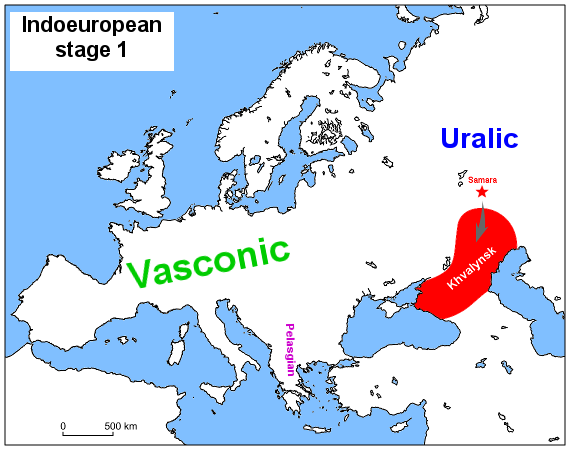There's no longer any logic behind claims that there were additional migrations from the Near East into Eastern Europe to those that affected Western and Central Europe during the Neolithic. That's because all of the Near Eastern admixture in Eastern Europe can be explained by gene flow from early Neolithic farmers from Central Europe. The stats are very robust in that regard.
This poses a major problem for anyone who still wants to see the origin of R1a in the Near East. That's because R1a really doesn't look like it was part of the Neolithic package, and yet it's by far the most important Y-chromosome haplogroup in Eastern Europe today. So something else must explain the presence of R1a in Eastern Europe and the Near East, and the most sensible option is the same third party gene flow into both regions.
Eastern Europe and West Asia appear to be closely related in terms of genome-wide genetic structure, like, for instance, in ADMIXTURE analyses via ancestral clusters that peak in the Caucasus. But this is something of an illusion, because global and West Eurasian-specific PCA show that these two regions are not related via direct gene flow (except some recent Russian admixture in the North Caucasus).
For instance, here's a PCA of West Eurasia. Just like in all other correctly run analyses of this type, Eastern Europe and the northern part of the Near East, including the Caucasus, deviate towards the same direction in the east, but not towards each other (except, like I say, some North Caucasians who are pushed north towards Russia due to recent admixture).
docs.google.com/file/d/0B9o3EYTdM8lQVlFTQ0oyRXNoaTQ/edit
Until recently it was impossible to know the reason for this phenomenon. I speculated that it was due to a lack of west Mediterranean ancestry in these regions, which is actually partly true, while others thought it was due to Hunnic and other admixtures from the far east. But if you look closely at the top right corner of the PCA, you'll see that MA-1, or Malt'a boy, is sitting there, and most Europeans and West Asians are actually being pulled towards his direction in varying degrees. The reason MA-1 is so far outside the range of modern genetic variation is because, unlike in some recent academic studies, he's not being projected onto the plot. Also, I limited the South Central Asian samples to Pathans and a single Kalash to make sure that South Asian admixture and heavy genetic drift typical of the Hindu Kush and surrounds didn't skew the results too much.
Needless to say, I don't think it's a coincidence that MA-1 belonged to Y-chromosome haplogroup R, and in fact it's clear to me that R1a is a marker of his relatives who contributed to the European and Near Eastern gene pools. The main question now is where exactly did this MA-1 related gene flow originate from. Based on all the data to date, the best we can say is that it was somewhere east of Central Europe and north of the Near East. The timeframe is likely to have been the Copper Age, because it follows the Neolithic, when Mediterranean-like farmers ruled Central Europe, and precedes the Bronze Age, when pre-proto-Uralics heavy in ENA (modern Siberian admixture) probably moved west of the Urals.
I'm sure that a couple of genomes from around the middle Volga from the Neolithic and Copper Age will be very useful in this context, and are likely to answer a lot of questions, including the most important ones about R1a and the Proto-Indo-Europeans.
By the way, I'm curious how any of you can still read these sorts of papers on Y-chromosome haplogroups with a straight face? Anyone who's been subjected to years of dubious and naive interpretations of limited data from academics in this area of study should really know better.



